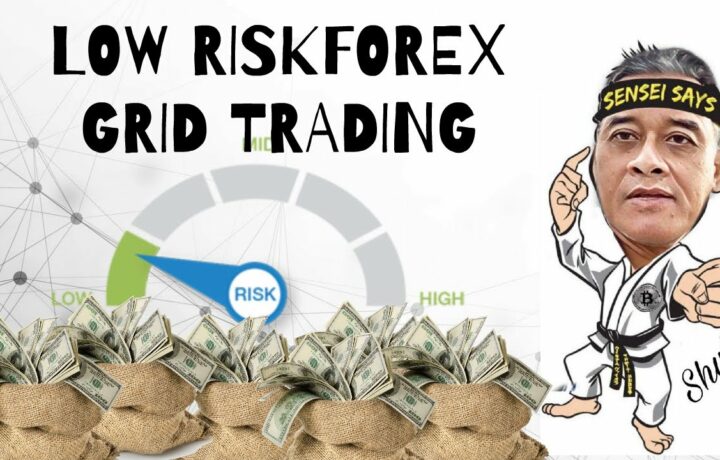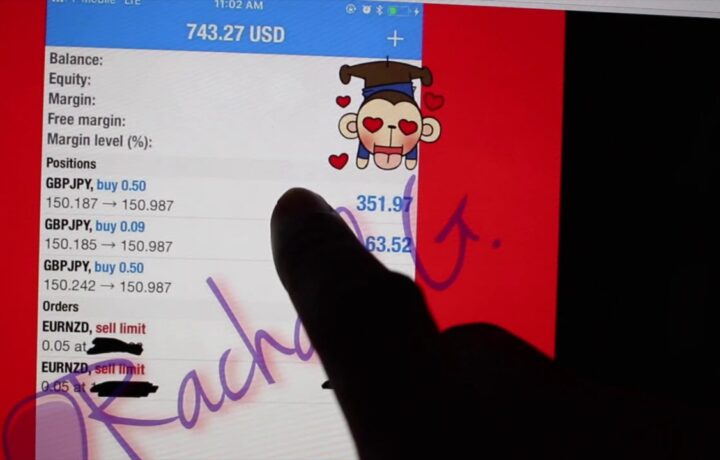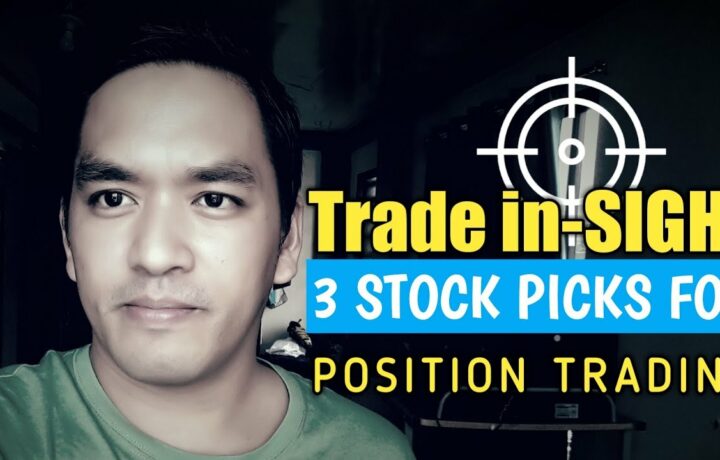Get Popular Stories Top Searched Forex Factory Position Trading, How to use The Forex Factory Economic Calendar.
Forex Factory is one of the most popular sites for forex traders online today. Its calendar provides great information for all types of traders. Using it will help you to understand the impact of news on the market, which could reflect on increased profit on your account.
So, how do you use the Forex Factory calendar? We explain all you need to know in this video:
1:11 Forex Factory Features.
1:56 Economic Calendar Navigation
3:29 Economic Calendar Features
5:49 How to Read an Economic Event
10:00 Changing Time Zone Settings
10:47 Using the Event Filter
Link to full guide: https://www.forexboat.com/forex-factory-economic-calendar/
***************************************
*Get free Trading Ideas and Insights*
Telegram Channel: https://t.me/forexboatofficial
***New to Forex? Get 80% off in our courses: ***
Forex Trading A-Z (4.5 stars and 52,000 students on Udemy): https://www.forexboat.com/forex-a-z
MetaTrader 4 Master (4.6 stars and 8,000 students on Udemy): https://www.forexboat.com/mt4-master
***************************************

Forex Factory Position Trading, How to use The Forex Factory Economic Calendar.
What is placement trading?
Setting trading is a common trading method where an individual holds a placement in a security for an extended period of time, generally over a number of months or years. Setting investors overlook short-term cost motions in favour of pinpointing and profiting from longer-term trends. It is this type of trading that many closely looks like investing, with the crucial difference being that buy-and-hold capitalists are limited to only going long.
Out of all the trading techniques, placement trading includes the lengthiest time-frame. Consequently there is a greater possibility for profit along with an increased inherent danger.
The advantages of placement trading consist of limited maintenance of settings, capitalising on even more considerable trends and moistening the ‘noise’ of the market.
Setting Trading
Setting trading is the lengthiest term trading and can have professions that last for several months to several years!
This type of forex trading is scheduled for the ultra-patient investors, and calls for a good understanding of the principles.
Foreign Exchange Setting TraderBecause placement trading is held for as long, fundamental motifs will be the primary focus when evaluating the marketplaces.
Principles determine the long term trends of money sets and it is necessary that you recognize how financial information influences your countries and its future outlook.
As a result of the prolonged holding time of your professions, your quit losses will be very large.
You need to make certain you are well capitalized or you will most likely obtain margin called.
Forex placement trading likewise calls for thick skin since it is practically assured that your professions will violate you at one point or an additional.
These will not just be little retracements either.
You might experience big swings and you need to prepare and have outright trust in your analysis in order to continue to be calm during these times.
Setting trading techniques and methods
Setting investors tend to use fundamental and technical analysis to review prospective cost trends within the marketplaces. Here are a couple of placement trading methods.
50-day moving average trading
The 50-day moving average (MA) indicator is a substantial technical indicator amongst placement investors. The reason for this is because of the reality that 50 is both a variable of 100 and 200, which have corresponding moving averages that show substantial long-lasting trends. This suggests that, when the 50-day MA intersects with 100- and 200-day MA signs, maybe suggesting the beginning of a brand-new long-lasting trend making it a perfect indicator for the placement trader.
Assistance and resistance trading
Assistance and resistance levels can indicate where an asset’s cost movement is headed, subsequently suggesting to position investors whether to open up or close a placement on specific properties.
A support degree is the cost an asset that, historically, does not fall below. You can have short-term support levels along with historic support levels that hold for years. Opposingly, the resistance degree is the cost of a security where it historically has a tendency not to be able to damage. Setting investors will use long term resistance, for example, to liquidate settings, only for the safety and security to fall after reaching this point. Similarly, they might get in at historic support levels if they anticipate a long term trend to start at this moment.
This method calls for that investors analyse graph patterns. When analysing the graph, placement investors consider 3 aspects when attempting to determine support and resistance levels. To start with, the historic cost of a security is the most reliable source when determining support and resistance. In periods of substantial gains or dips in a market, recurring support and resistance levels are simple to place. Secondly, previous support and resistance levels can show future levels. It is not uncommon for a resistance degree to become a future support degree once it has actually been broken. Finally, technical signs like the Fibonacci retracement offer vibrant support and resistance levels that relocate as the asset cost actions.
Trading breakouts
Trading breakouts can be valuable for placement investors as they can indicate the begin of the following significant move in the market. Traders utilizing this strategy are attempting to open up a placement in the onset of a fad.
An outbreak is where the cost of an asset relocates outside specified support or resistance levels with enhanced quantity. The suggestion behind trading breakouts is to open up a lengthy placement after the safety and security breaks above resistance or open up a short placement when the safety and security breaks listed below support. An outbreak method is typically the structure for trading massive cost motions in a security. To effectively trade breakouts, you will need to be positive in determining periods of support and resistance.
Pullback and retracement method
A pullback in a market is a short dip or small turnaround in an asset’s current cost trend. This strategy is used when there is a quick market dip in a longer-term trend. Pullback investors aim to capitalise on these pauses on the market.
The suggestion behind this strategy is to get reduced and offer high prior to a market briefly dips, and afterwards to get again at the new reduced. If executed effectively, a trader can not only benefit from a lasting trend, but avoid feasible market losses by marketing high and buying the dips. Of course, this is easier stated than done. Some pullback investors use retracement signs, like the Fibonacci retracement.
Comprehending Setting Traders
Setting investors are, by definition, trend followers. Their core belief is that as soon as a fad begins, it is likely to proceed. Just buy-and-hold long-lasting capitalists, who are classified as passive capitalists, hold their settings for longer periods than do placement investors.
Their trading philosophy is geared towards effectively recording the bulk of a fad’s relocation which would cause a gratitude of their financial investment resources. Therefore, it is the polar reverse of day trading which seeks to take advantage of short term market changes. It likewise differs from swing trading because, though both are based on principle of trend following, placement investors hold their settings for much longer timespan than do swing investors.
Setting investors might use technical analysis, fundamental analysis, or a combination of both to make trading decisions. They likewise rely upon macroeconomic aspects, general market trends and historic patterns to select financial investments which they believe will attain their wanted outcome. To be successful, a placement trader has to determine the access/ exit levels and have a plan in position to regulate danger, typically using stop-loss levels.
The major benefit of placement trading is that there isn’t much demand on the trader’s time. When the trade has actually been initiated and safeguards have been implemented then it’s just a matter of waiting on the wanted outcome. The major danger is that the minor changes that they chosen to overlook can, at times, turn into trend reversals, which can have a negative affect on their trading accounts. The other drawback is that since their resources will be bound for long term amount of times, they could fall victim to chance expenses.
Get Popular Stories Top Searched Forex Factory Position Trading and Financial market news, analysis, trading signals and Forex investor testimonials.
Forex Alert:
Our service consists of items that are traded on margin and bring a risk of losses in excess of your transferred funds. The items might not appropriate for all capitalists. Please guarantee that you totally recognize the dangers involved.




